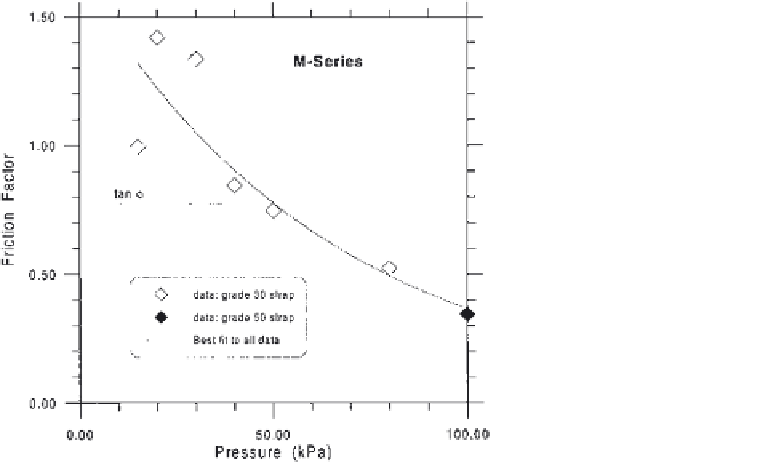Geoscience Reference
In-Depth Information
the anchored length. For a pullout box that utilizes a sleeve, L
p
is the embedded
reinforcement length minus the sleeve length. For a pullout box of adequate large
scale, the value of aF so measured may be considered as representative of the
field condition, with s
0
being taken as the average overburden stress at the
reinforcement level. Because pullout box testing alone will not yield separate
values of aand F, the test results were interpreted simply in terms of the friction
factor, f, defined by f
aF.
A set of typical test results for a well-compacted granular soil is presented
in Fig. 5. The test results unambiguously show that f is dependent on s
0
,thetest
pressure. The trend manifested in Fig. 5 was also representative of test data for
other well-compacted granular soils (Lo, 1998). The f-value decreased with a
reduction in test pressure and can exceed tan f, where fis the peak friction angle
of the material. This observation can be explained by the constrained dilatancy
hypothesis as detailed in Lo (1998). During reinforcement pullout, the soil in the
vicinity of the strap is subject to considerable shearing. For a well-compacted
granular soil, shearing will lead to volumetric dilation. However, the volumetric
dilation of the soil elements in the vicinity of the strap will be contained by the
surrounding soil. This interaction locally increases the normal stress, s
n
, acting
directly on a strap to a value in excess of s
0
, the test pressure or overburden stress
acting on the surrounding soil. This local
¼
increase in normal stress,
Figure 5
Variation of friction factor with applied pressure.









Search WWH ::

Custom Search